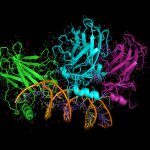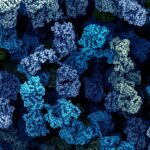Link to Pubmed [PMID] – 30552790
Link to DOI – 10.1111/cmi.12994
Cell Microbiol 2019 05; 21(5): e12994
If the mycelium of Aspergillus fumigatus is very short-lived in the laboratory, conidia can survive for years. This survival capacity and extreme resistance to environmental insults is a major biological characteristic of this fungal species. Moreover, conidia, which easily reach the host alveola, are the infective propagules. Earlier studies have shown the role of some molecules of the outer conidial layer in protecting the fungus against the host defense. The outer layer of the conidial cell wall, directly in contact with the host cells, consists of α-(1,3)-glucan, melanin, and proteinaceous rodlets. This study is focused on the global importance of this outer layer. Single and multiple mutants without one to three major components of the outer layer were constructed and studied. The results showed that the absence of the target molecules resulting from multiple gene deletions led to unexpected phenotypes without any logical additivity. Unexpected compensatory cell wall surface modifications were indeed observed, such as the synthesis of the mycelial virulence factor galactosaminogalactan, the increase in chitin and glycoprotein concentration or particular changes in permeability. However, sensitivity of the multiple mutants to killing by phagocytic host cells confirmed the major importance of melanin in protecting conidia.








